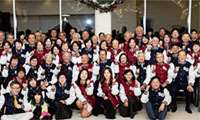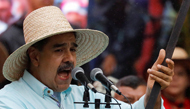News about stretching seems to come in waves.
Stretch as part of your warmup.
No, stretch after your workout.
No, don’t even bother stretching.
Or the most confusing: Even if you think you like it, it’s been oversold as a way to prevent injury or improve performance.
The truth is that after dozens of studies and years of debate, no one really knows whether stretching helps, harms, or does anything in particular for performance or injury rates.
Yet most athletes remain convinced that stretching helps, and recently more and more have felt a sort of social pressure to show that they are limber, in part due to the popularity of yoga.
Flexibility has become another area where many athletes want to excel.
They’re like one of my running partners, Claire Brown, a 35-year-old triathlete.
“I always feel like, well, athletes should do yoga,” Claire said.
“It’s supposed to be really good for running, and when I do it regularly, it does loosen up my hips and make me feel better for running.
” For the final word on stretching, there is an official government review by the Centers for Disease Control and Prevention published in the March 2004 issue of the journal Medicine & Science in Sports & Exercise.
Its conclusion, that the research to date is inadequate to answer most stretching questions, still holds.
The best that Dr. Julie Gilchrist, a medical epidemiologist at the Centers for Disease Control and one of the study’s authors, can offer is a few guidelines and observations about why studies have yet to answer the stretching questions.
If your goal is to prevent injury, Dr. Gilchrist said, stretching does not seem to be enough.
Warming up, though, can help.
In fact, Dr. Gilchrist said, in her review of published papers, every one of the handful of studies that concluded that stretching prevented injuries included warm-ups with the stretches.
That is one reason the studies so far have been inadequate.
Researchers need to separate their variables, said Malachy McHugh, the director of research at the Lenox Hill Hospital Nicholas Institute of Sports Medicine and Athletic Trauma in Manhattan.
“What’s missing are studies of stretching alone and studies of no stretching and no warm-up,” Dr.
McHugh said.
But it may not be so easy to do such studies, he admitted, because most athletes in strength and speed sports like soccer and football believe in stretching, no matter what scientists say.
Suppose you wanted to do a proper study, with a control group that did not stretch.
Good luck, he said.
“If you go to a team and say, ‘You guys are not going to stretch and you guys are going to stretch,’ they would say, ‘You can leave the room now,’ ” Dr.
McHugh said.
Some athletes - gymnasts, hurdlers and swimmers among them - may need to stretch to gain the flexibility they need for their sport, Dr.
McHugh said.
But distance runners do not benefit from being flexible, he found.
The most efficient runners, those who exerted the least effort to maintain a pace, were the stiffest.
Dr. Charles Kenny, an orthopedist in private practice in Stockbridge, Massachusetts, is adamantly opposed to stretching.
The practice, he said, weakens performance and makes an injury more likely.
“If stretching was a drug, it would be recalled,” Dr. Kenny said.
스트레치, 할 것인가, 말 것인가?
지나 콜라타
스트레칭에 관한 한 설이 분분하다. 준비운동의 일환으로 해라, 운동을 마친 다음에 해라, 스트레칭 같은 걸로 성가실 필요 없다 등등 말도 많고 탈도 많다. 아무리 좋다고 생각하더라도 부상 예방이나 성적 향상 방법으로 너무 많이 팔렸다는 말처럼 헷갈리게 하기도 한다.
진실은 수십건의 연구및 다년간의 토론 결과 스트레칭이 도움이 되는지, 해로운지, 아니면 특히 성적이나 부상발생률에 아무런 영향도 미치지 않는지를 아무도 확실히 모른다는 것이다. 그래도 대부분의 운동선수들은 스트레칭이 도움이 된다고 확신하고 있고 부분적으로 요가의 인기에도 기인, 유연한 근육을 과시해야할 일종의 사회적 압박감까지 느끼는 사람이 최근 점점 많아지고 있다. 유연성은 많은 운동선수들이 탁월하기를 바라는 분야가 됐다.
“유연성은 나의 달리기 파트너와 같다”는35세의 삼종경기 선수 클레어 브라운은 “운동선수들은 요가를 해야한다고 항상 생각해왔는데 정기적으로 하면 엉덩이 근육을 풀어주기 때문에 달리기가 수월해진다”고 말했다.
스트레칭에 관한 궁극적 담화로는 2004년 3월에 출판된 스포츠와 엑서사이즈에 관한 의학및 과학지에 게재된 연방 질병 통제및 예방 센터의 공식 논평을 들 수 있다. 결론은 이제까지 나온 연구들은 스트레칭에 대한 의문을 풀기에는 대부분 부적절했다는 것인데, 아직도 마찬가지다.
그 저자중 한명으로 스트레칭에 대한 연구들이 아직도 의문을 풀지 못한 이유에 대해 기껏 두어가지 지침과 관찰을 제시할 뿐인 질병통제센터의 방역학자 줄리 길크리스트 박사는 부상을 방지할 목적이라면 스트레칭만으로는 충분치 않아 보이지만 준비운동은 도움이 될 수 있다고 말한다. 이제까지 나온 논문들을 살펴본 결과로는 스트레칭이 부상을 방지한다고 결론지은 몇가지 연구들은 하나같이 준비운동을 스트레치에 포함시켰다고 길크리스트 박사는 말했다.
그것은 이제까지의 연구들이 부절적했다는 이유중 하나일 뿐으로 맨해튼의 레녹스 힐 하스피털의 니콜라스 스포츠 의학및 운동선수 부상 연구소의 연구실장 말라키 맥휴도 “스트레칭 하나만 한 연구와 스트레칭도 안하고 준비운동도 안한 연구도 없다”고 지적한다.
그러나 그런 연구를 하기는 쉽지 않을 것이라는 점은 맥휴 박사 자신도 인정한다. 축구나 풋볼처럼 힘과 속도를 겨루는 선수들은 대부분 과학자들이 무슨 말을 하건간에 스트레칭을 신봉하기 때문에 스트레치를 하지 않는 통제 집단을 만들려 해봤자 소용이 없을 것이라고 그는 말한다. “어떤 팀에 가서 이쪽 반은 스트레치를 하지 말고, 저쪽 반만 스트레치를 하라고 하면 당장 쫓겨날 겁니다”
체조, 장애물경주, 수영 같은 몇몇 종목 선수들은 스트레칭으로 운동에 필요한 유연성을 얻을 수 있을 것이라고 맥휴 박사는 말했다.
그러나 장거리 달리기에는 유연성이 별 도움이 안된다. 최소의 노력으로 속도를 유지하는 노련한 선수들은 대부분 제일 몸이 뻣뻣한 사람들이다.
매사추세츠주 스탁브리지에서 개업중인 정형외과 의사인 찰스 케니 박사는 스트레칭에 단호히 반대한다. 스트레칭을 했다간 기록도 나빠지고 다치기도 더 쉽다는 것. “만일 스트레칭이 약이었다면 회수당했을 것”이라고 케니 박사는 말했다.
Stretch 스트레치, 사지, 수족을 쭉 펴기
warm-up 준비운동, 워밍업
in part 일부
due to ~에 기인하는, ~ 때문에
limber 근육이 나긋나긋한, 유연한
loosen up 경기 전에 근육을 풀다
epidemiologist 전염병학자, 역학자
believe in 신봉하다, 믿다
no matter what 비록 ~일지라도(할지라도)
스마터리빙
more [ 건강]
[ 건강]이제 혈관 건강도 챙기자!
[현대해운]우리 눈에 보이지 않기 때문에 혈관 건강을 챙기는 것은 결코 쉽지 않은데요. 여러분은 혈관 건강을 유지하기 위해 어떤 노력을 하시나요?
 [ 건강]
[ 건강]내 몸이 건강해지는 과일궁합
 [ 라이프]
[ 라이프]벌레야 물럿거라! 천연 해충제 만들기
 [ 건강]
[ 건강]혈압 낮추는데 좋은 식품
[현대해운]혈관 건강은 주로 노화가 진행되면서 지켜야 할 문제라고 인식되어 왔습니다. 최근 생활 패턴과 식생활의 변화로 혈관의 노화 진행이 빨라지고
사람·사람들
more많이 본 기사
- 신혼부부 ‘역대 최저’ 24%는 3억 이상 대출
- 통일교 특검 대신 “내란 2차 특검”… 민주당 ‘철벽 방어’
- 제미나이 추격 오픈AI 새 모델 GPT-5.2 조기 공개
- AI공급망 동맹 ‘팍스 실리카’ 8개국 참여
- “한국, 재래식 방위주도” 한미 핵협의그룹 첫 명시
- TV 나와 암투병 근황 공개한 찰스 英국왕… “조기검진 중요해요”
- 굽히지 않는 젤렌스키…트럼프에 역제안 카드로 레드라인 저지
- 송지효 “’런닝맨’ 출연 중 8년 ♥장기 연애했다” 폭탄 고백..멤버 모두 ‘충격’
- 선교사 아들 가나대사로 금의환향… “한국·가나는 두 어머니”
- 소셜연금 NY 2,018달러·NJ 2,190달러
- ‘공공임대, 역세권에 국평으로’ 주문한 이대통령
- 뉴욕증시, 브로드컴 비관론에 AI 테마 ‘와르르’…나스닥 1.7%↓ 마감
- 세모(歲暮)를 보내는 마음
- 변요한♥티파니, 결혼 전제 열애 인정
- “’삐빅’ 비트코인으로 결제할게요”…맥도날드·편의점서도 쓴다는 ‘이곳’, 어디?
- MD여성골프협, 따듯한 연대로 마무리
- 한화, 호주 방산업체 최대주주 된다
- 한국 교사 10명, 페어팩스 초등교 배치
- 워싱턴주 홍수로 수만명 대피…주지사 “유례없는 상황 직면”
- 한국도 참여한 美주도 AI 동맹 “비시장적 관행에 공동 대응”
- 종묘 일대 세계유산지구로 세운4구역 개발 영향 줄까
- ‘양육비 미지급’ 김동성 “내가 月700만원? 통장 압류된 신용불량자”
- 젤렌스키 측근 협상가가 FBI국장을 왜?…비밀회동 목적 의문
- 정준호 얼굴 훔쳐 가짜 광고..소속사 “악의적 행위, 법적 대응”
- ‘나혼산’ 박나래, 흔적도 없이 하차… 1
- 美지상작전 임박설 속 베네수 이민자 송환 중단 놓고 ‘혼선’
- 김지민 “유부남과 불륜, 날 알리바이로 이용”..친구와 손절한 사연 [이호선의 사이다]
- “보안사고 반복 땐 과징금 폭탄”… 해킹과 전면전 선포한 과기부
- “엔비디아, 中수요 반영 H200 증산”…일각선 “中, 수입거부할듯”
- “머스크의 X, 3분기 매출 7억 달러대…순손실 5억 달러대”
- “박나래 前매니저 5000만원 지급? 과한 수당 요구” 주장
- 국힘·개혁신당 “통일교 특검 수용하라”…與 “정치공세·물타기”
- 주한미군사령관 “전작권 전환, 시기보다 조건 봐야”
- ‘고가 논란’ 북중미 월드컵 티켓, 판매 첫날 500만건 신청
- 트럼프, 중남미 마약카르텔 공습 확대의지… “지상서도 시작한다”
- 19개주, 트럼프 전문직 비자 ‘10만불 수수료’에 소송
- 무단 주차 견인료 150불⇨ 210불
- 이효리, 과거 인연도 소중.. ‘패밀리’ 김수로 만나 ‘다정’
- FDA, 우울증 치료 ‘뇌 자극’ 가정용 헤드셋 기기 첫 승인
- 미일 ‘팍스 실리카’ 협력 문서 서명
- “귀금속 역사상 가장 극적인 재평가”…올해는 銀이 金 앞섰다 [공준호의 탈월급 생존법]
- “마약밀매·인신매매 등 국제범죄 척결” ‘국토안보 태스크포스’ 뉴욕지부 출범
- ‘오바마케어 보조금’ 올해 말 종료 가능성 ↑ 커져
- 전도연 “얼굴 근육 가장 많이 써…자백의 대가 이리 클 줄은”
- 정국 윈터 탈퇴 요구 트럭시위에 정국 팬 응원 트럭 ‘맞불’
- 챗GPT서 ‘포토샵’ 무료 오픈AI·어도비 합의 발표
- “20분이면 샤워·건조까지 풀코스로”…상상 속 ‘인간 세탁기’ 드디어 첫 가동, 가격 보니
- ‘정국 열애설’에 뿔난 아미 ‘워워’..BTS 완전체, 전역→웃으며 연습실 회동 첫 인증샷
- MD한인회장 또‘무후보’
- 이란, 노벨평화상 수상자 모하마디 또 체포… “불법 구호 외쳐”
1/5지식톡

-
 테슬라 자동차 시트커버 장착
0
테슬라 자동차 시트커버 장착
0테슬라 시트커버, 사놓고 아직 못 씌우셨죠?장착이 생각보다 쉽지 않습니다.20년 경력 전문가에게 맡기세요 — 깔끔하고 딱 맞게 장착해드립니다!장착비용:앞좌석: $40뒷좌석: $60앞·뒷좌석 …
-
 식당용 부탄가스
0
식당용 부탄가스
0식당용 부탄가스 홀세일 합니다 로스앤젤레스 다운타운 픽업 가능 안녕 하세요?강아지 & 고양이 모든 애완동물 / 반려동물 식품 & 모든 애완동물/반려동물 관련 제품들 전문적으로 홀세일/취급하는 회사 입니다 100% …
-
 ACSL 국제 컴퓨터 과학 대회, …
0
ACSL 국제 컴퓨터 과학 대회, …
0웹사이트 : www.eduspot.co.kr 카카오톡 상담하기 : https://pf.kakao.com/_BEQWxb블로그 : https://blog.naver.com/eduspotmain안녕하세요, 에듀스팟입니다…
-
 바디프렌드 안마의자 창고 리퍼브 세…
0
바디프렌드 안마의자 창고 리퍼브 세…
0거의 새제품급 리퍼브 안마의자 대방출 한다고 합니다!8월 23일(토)…24일(일) 단 이틀!특가 판매가Famille: $500 ~ $1,000Falcon: $1,500 ~ $2,500픽업 & 배송직접 픽업 가능LA…
-
 바디프렌드 안마의자 창고 리퍼브 세…
0
바디프렌드 안마의자 창고 리퍼브 세…
0거의 새제품급 리퍼브 안마의자 대방출 한다고 합니다!8월 23일(토)…24일(일) 단 이틀!특가 판매가Famille: $500 ~ $1,000Falcon: $1,500 ~ $2,500픽업 & 배송직접 픽업 가능LA…
케이타운 1번가
오피니언

22기 LA평통 출범에 거는 기대

연말 시즌 사기·범죄 경계해야
 메건 매카들 워싱턴포스트 칼럼니스트
메건 매카들 워싱턴포스트 칼럼니스트 [메건 매카들 칼럼] 장편영화의 마지막 챕터인가
 김미선 서북미문인협회 회장시인
김미선 서북미문인협회 회장시인 [한국춘추] 하늘을 계산한 사람들, 칠정산
 이희숙 시인·수필가
이희숙 시인·수필가 [금요단상] 그을린 자리에서 다시
 심상용 / 서울대 미술관장
심상용 / 서울대 미술관장 [미술 다시보기] 지옥에 대하여
 서정명 / 서울경제 기자
서정명 / 서울경제 기자[만화경] 주한미군과 ‘도련선 리스크’
 한 영 재미수필가협회 회장
한 영 재미수필가협회 회장 [한영의 독서칼럼] 불안한 사람들
 정영현 서울경제 테크성장부장
정영현 서울경제 테크성장부장 [여명] 콘크리트가 데이터가 됐을 뿐, 달라진 게 없다
1/3지사별 뉴스

“마약밀매·인신매매 등 국제범죄 척결” ‘국토안보 태스크포스’ 뉴욕지부 출범
연방 국토안보부가 10일 ‘국토안보 태스크포스’(HSTF) 뉴욕지부를 출범시켰다.HSTF는 마약 카르텔, 인신매매, 자금세탁, 갱단 등 국제범…
‘오바마케어 보조금’ 올해 말 종료 가능성 ↑ 커져

한국 교사 10명, 페어팩스 초등교 배치
‘글로벌 앰버서더 티처스 프로그램’(Global Ambassador Teachers Program)은 국제 교사 교환 프로그램 가운데 하나로 …
김찬수씨, 포토맥 포럼에 2천달러 기부

초강경 추방 드라이브… 한인사회 불안감 확산
도널드 트럼프 행정부가 출범 직후 불법체류자 100만 명 추방 목표 달성을 위해 초강경 조치를 본격화하면서 미주 한인사회에 불안감이 심각하게 …
<부음> 이명무 전 SF 체육회장 부인상

오늘 하루 이 창 열지 않음 닫기 





















































.png)


댓글 안에 당신의 성숙함도 담아 주세요.
'오늘의 한마디'는 기사에 대하여 자신의 생각을 말하고 남의 생각을 들으며 서로 다양한 의견을 나누는 공간입니다. 그러나 간혹 불건전한 내용을 올리시는 분들이 계셔서 건전한 인터넷문화 정착을 위해 아래와 같은 운영원칙을 적용합니다.
자체 모니터링을 통해 아래에 해당하는 내용이 포함된 댓글이 발견되면 예고없이 삭제 조치를 하겠습니다.
불건전한 댓글을 올리거나, 이름에 비속어 및 상대방의 불쾌감을 주는 단어를 사용, 유명인 또는 특정 일반인을 사칭하는 경우 이용에 대한 차단 제재를 받을 수 있습니다. 차단될 경우, 일주일간 댓글을 달수 없게 됩니다.
명예훼손, 개인정보 유출, 욕설 등 법률에 위반되는 댓글은 관계 법령에 의거 민형사상 처벌을 받을 수 있으니 이용에 주의를 부탁드립니다.
Close
x